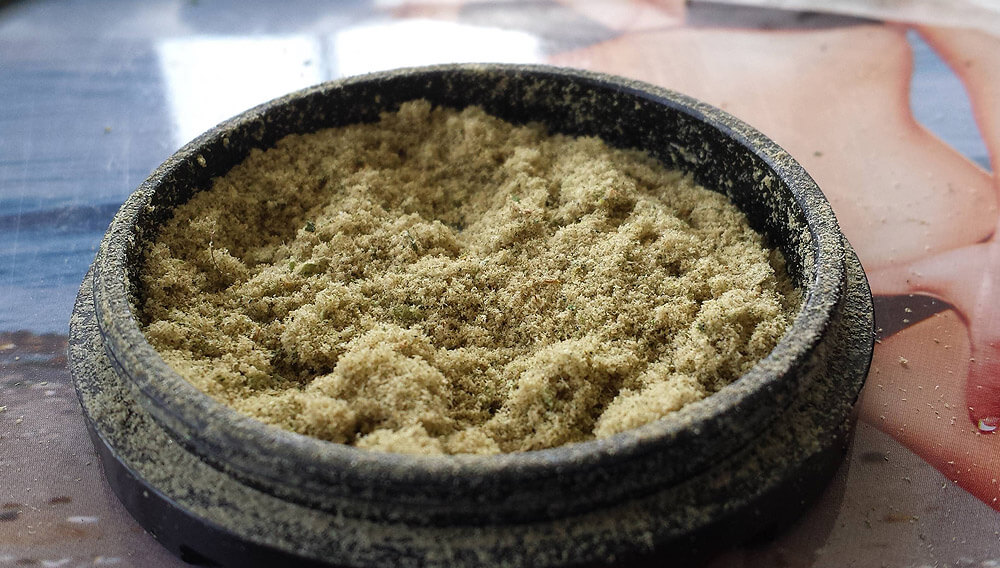Kifi is the result of extracting and concentrating all the crystals which cover marijuana buds. The crystals are the resin glands where terpens and cannabinoids are present, providing the unique and popular medical and psychoactive effects of marijuana. These resin glands are mainly placed in the bud trichomes, and they are the most psychoactive elements in the plant, so their effects are really powerful.

What is kifi
Kifi, kief, keef or kif?
While marijuana plants still have cannabinoids, kifi, by means of resin glands – mainly developed on buds, is more psychoactive.
Trichomes: mainly, for protection
Kifi is specifically referred to the formation of crystals on the tip of the gland; this substance is a part of what is called trichome. Many plants, and different algae, have external trichomes for specific evolving purposes; for instance, some carnivorous plants depend on those sticky trichomes to catch their prey. Other plants, like cannabis, use them as a deterrent element against herbivores.
In a marijuana plant, trichomes keep hungry herbivores away, through an intense psychoactive experience which, theoretically, disorients the animal, preventing it to eat the rest of the plant. The strong resin odor attracts pollinating insects and predators, which maintained the herbivore populations.
How is kifi extracted?
If you like cannabis concentrations or extractions, kifi sieving is a great alternative, due to the high concentration of terpenes and cannabinoids in the resin glands, separating the kifi crystals from the vegetal material, reducing the amount of carbonized material entering the body.
Kifi sieving is simple, by means of a grinder or three-chamber herb mill; it will crush it thinly, so the crystals will fall through a screen-sieve, collecting it in the other little compartment; two-chamber grinders tend to lose the most powerful kifi crystals, by blending with dry weed and sticking to the internal part of the grinder.

kifi grinder
For extracting a great amount of kifi, simple serigraphy material is used, separating it by sieving the vegetal material with the buds.
Many people make improvised sieves, with layers similar to the ones in the picture. Kifi size ranges from 75 to 125 microns; separating all the resin from vegetal material could be difficult: to make sure you are collecting clean kifi, without any vegetal material, pile three or four thin nets.
For the best results, home extractors, with different calibers, are consecutively piled, from largest to smallest; for buying the screens, the wires and the threads per inch, LPI – lines per inch – number is very important to remember: the bigger screen, the smaller LPI; when kifi sieving, 80-270 LPI net tends to work better.
The purer kifi, the lighter color; greenish kifi means that there is a little blended vegetal material, while clean kifi tends to be whitish.
What is the difference between kifi and hash? Main features
For hash making, kifi extraction is one of the first steps; basically, hash is heated and pressed kifi, forming a greenish-brown soft ball. Heat and pressure on kifi change its composition, by breaking the resin glands; once the kifi is ‘broken’, the flavor, and the general effects of the product, are slightly different.
The pressure on kifi also darkens its color; the more pressure, the darker hash. Kifi could be one of the most exciting marijuana products, and it is still one of the most popular and available; for more information on kifi and its extraction, you can have a look on Ed Rosenthal’s Beyond Buds; in the meantime, make sure to have a grinder, or three-chamber herb mill, if you want to make the maximum profit of your weed. .





Minga
So random fact- True Kif is chopped with black tobacco and is over 1200 years old.
Kif is often mistakenly used in the US cannabis culture as the above.